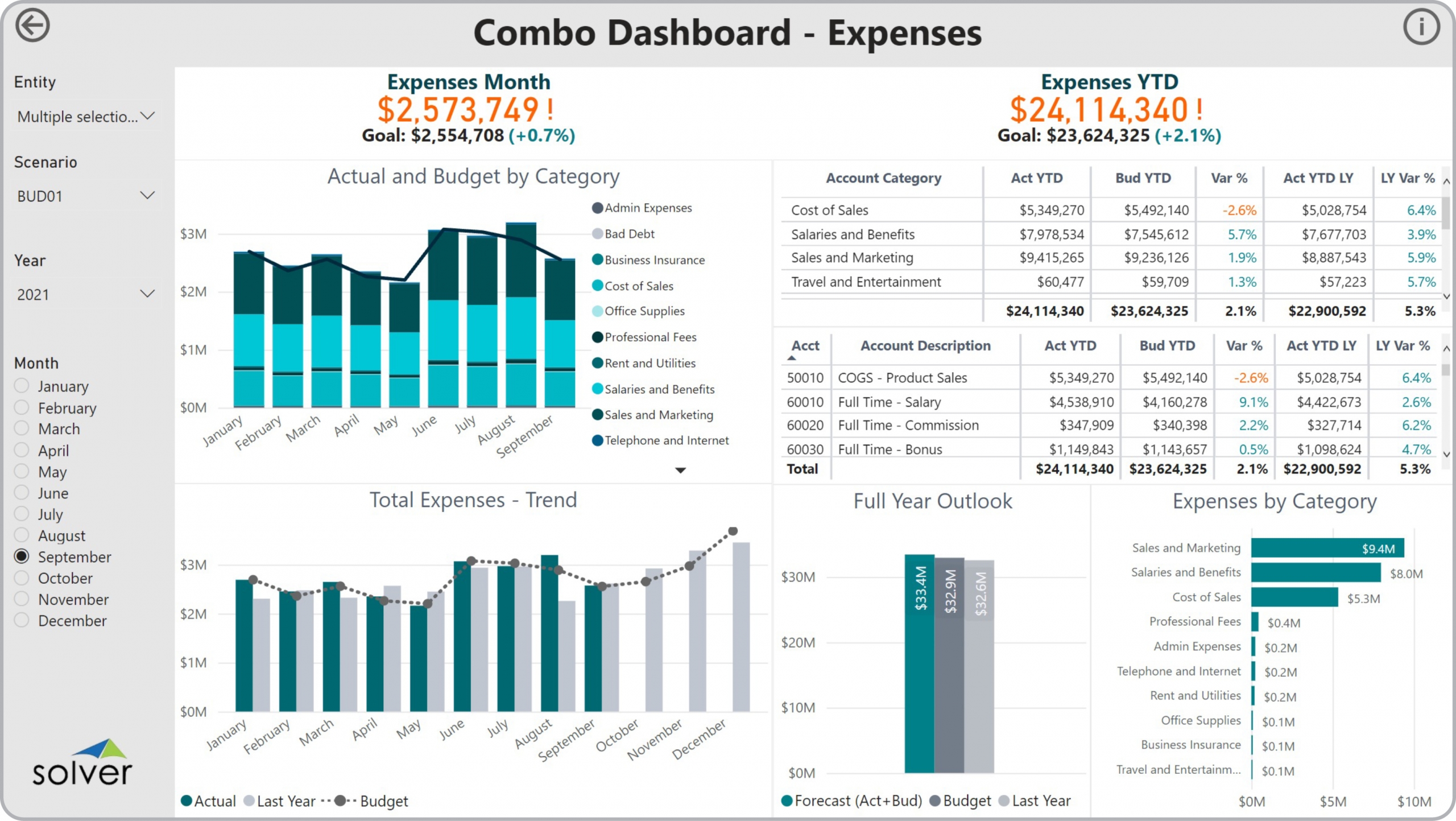How can
Financial Dashboard
s Drive Faster and Better Decisions? As CFOs increasingly become key players in the Monthly Reporting Process, they must rely on modern self-service corporate performance management (CPM) and business intelligence (BI) tools. Using interactive Financial Dashboards like the Expense Dashboard with Trends and Variances template shown below enables them and users from the accounting and department teams to experience near real time expense analysis that help drive faster and better decisions.
Who uses
Expense Dashboard with Trends and Variance
s and What are Some Key Analytical Features? In today’s fast-paced business environment, CFOs are under high pressure to supply end users like department managers and FP&A professionals with timely and concise Financial Dashboards. Companies use key features like the ones below to support their users with effective analysis that helps drive expense control.
- Comparison of Actual expenses with Budget and Last Year figures
- % Variances with color coding
- Charts with trends as well as an automated estimate (Actual YTD + Budget/Forecast for the remaining months of the year)
The Expense Dashboard with Trends and Variances template can be used as a key supporting element of the Monthly Reporting process:

Example of an Expense Dashboard with Trends and Variances to Streamline the Monthly Reporting Process
The Expense Dashboard with Trends and Variances is a ready-to-use Financial Dashboard from the
Solver Marketplace
A Brief Description of the
Expense Dashboard with Trends and Variances
Template Financial Dashboards like the one seen in the image above are interactive and parameter driven and typically contain sections with matrix variance reports by account category and account, as well as trend charts and comparative charts. One of the important features that aid the user in the analysis process is the ability to click on any row in the two tables and see that GL expense category or account highlighted in each chart. Expense Dashboard with Trends and Variances are often used in conjunction with revenue dashboards, profit & loss reports, exception dashboards, and forecast input models.
Data Integration to Transaction Systems Most organizations these days want automated and streamlined
planning,
reporting and
analysis. However, many of the benefits described earlier rely on best of breed Corporate Performance Management (CPM) tools and/or Business Intelligence (BI) capabilities as well as data marts or data warehouses that use pre-built integrations to the organization’s ERP system. Oftentimes, they also need integrations to other key data sources like CRM, subscription systems, payroll tools, etc. Modern, cloud-based ERPs like Microsoft Dynamics 365 Finance (D365 Finance), Microsoft Dynamics 365 Business Central (D365 BC), Sage Intacct, Acumatica, Netsuite and SAP have robust APIs which allow for dynamic integrations to CPM and BI tools that are fully automated and flexible to run on a schedule or on-demand.
Additional Resources to Aid with Research of Templates, CPM and BI Tools
- Templates from Solver that are pre-built and that work out-of-the-box using the Solver CPM cloud. Click here.
- Template examples: You find more than 500 CPM and BI Template examples here.
- Interactive Dashboard examples: Try Power BI dashboard templates from Solver here.
- Software evaluation and selection:
- Creating efficient processes:

